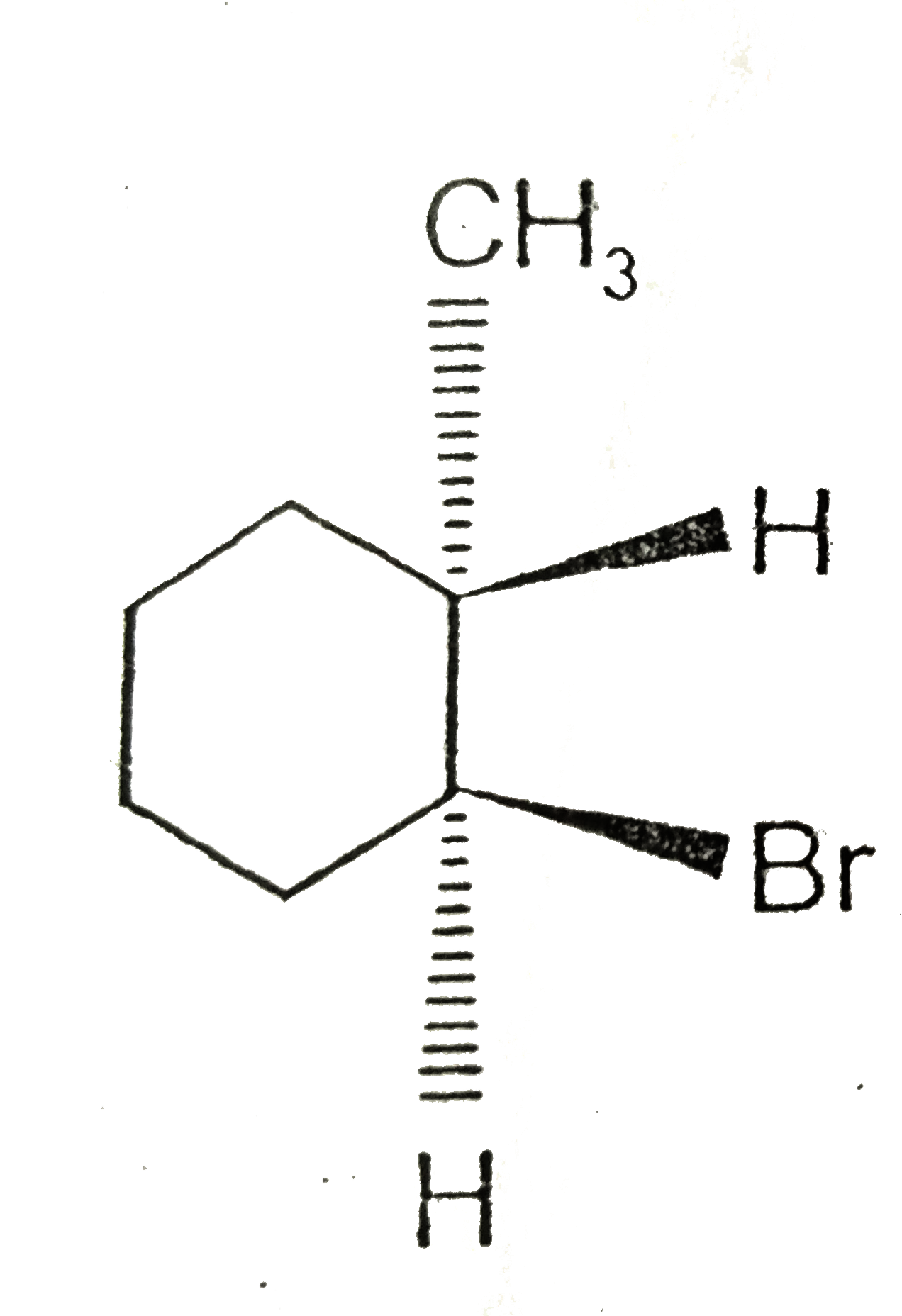An alkene on reductive ozonolysis gives two products A and B . When these products are treated with conc. KOH one of these products gives an alcohol and an acid salt. Here the alkene can be
But -2- ene
Pent -2- ene
Isobutene
cyclo hexene
The correct Answer is:C
To solve the problem, we need to identify the alkene that, upon undergoing reductive ozonolysis, produces two products (A and B), where one of these products can react with concentrated KOH to yield an alcohol and an acid salt.
1. Understanding Reductive Ozonolysis:
- Reductive ozonolysis involves the cleavage of the double bond in alkenes using ozone (O3) followed by a reducing agent (like dimethyl sulfide, Me2S). This reaction typically yields carbonyl compounds (aldehydes or ketones).
2. Identifying the Products:
- When an alkene undergoes ozonolysis, it breaks the double bond and forms two products. We denote these products as A and B.
3. Analyzing the Reaction with KOH:
- The problem states that one of the products (either A or B) reacts with concentrated KOH to produce an alcohol and an acid salt. This indicates that the product must be a carbonyl compound (aldehyde or ketone) that can undergo a Cannizzaro reaction.
4. Cannizzaro Reaction Conditions:
- The Cannizzaro reaction occurs with aldehydes that do not have alpha hydrogens. This means that one of the products must be an aldehyde without any hydrogen atoms on the carbon adjacent to the carbonyl group.
5. Evaluating Possible Alkenes:
- We will evaluate several alkenes to see which one can produce a suitable product upon ozonolysis.
- But-2-ene (CH3-CH=CH-CH3):
- Ozonolysis yields two moles of acetaldehyde (CH3CHO), which has alpha hydrogens. This cannot undergo Cannizzaro reaction.
- Pent-2-ene (CH3-CH2-CH=CH-CH3):
- Ozonolysis yields CH3CH2CHO (butanal) and CH3CHO (acetaldehyde). Both products have alpha hydrogens, so this is not suitable.
- Isobutene (2-methylpropene, CH3-C(CH3)=CH2):
- Ozonolysis yields acetone (CH3COCH3) and formaldehyde (HCHO). Formaldehyde has no alpha hydrogens, making it suitable for the Cannizzaro reaction.
- Cyclohexene:
- Ozonolysis yields two products, but both contain alpha hydrogens, so this cannot be the answer.
6. Conclusion:
- The only alkene that meets the criteria is isobutene (2-methylpropene), which produces formaldehyde (HCHO) and acetone (CH3COCH3) upon ozonolysis. The formaldehyde can undergo the Cannizzaro reaction to yield an alcohol and an acid salt.
Final Answer:
The alkene can be isobutene (2-methylpropene).
- Reductive ozonolysis involves the cleavage of the double bond in alkenes using ozone (O3) followed by a reducing agent (like dimethyl sulfide, Me2S). This reaction typically yields carbonyl compounds (aldehydes or ketones).
- When an alkene undergoes ozonolysis, it breaks the double bond and forms two products. We denote these products as A and B.
- The problem states that one of the products (either A or B) reacts with concentrated KOH to produce an alcohol and an acid salt. This indicates that the product must be a carbonyl compound (aldehyde or ketone) that can undergo a Cannizzaro reaction.
- The Cannizzaro reaction occurs with aldehydes that do not have alpha hydrogens. This means that one of the products must be an aldehyde without any hydrogen atoms on the carbon adjacent to the carbonyl group.
- We will evaluate several alkenes to see which one can produce a suitable product upon ozonolysis.
- But-2-ene (CH3-CH=CH-CH3):
- Ozonolysis yields two moles of acetaldehyde (CH3CHO), which has alpha hydrogens. This cannot undergo Cannizzaro reaction.
- Pent-2-ene (CH3-CH2-CH=CH-CH3):
- Ozonolysis yields CH3CH2CHO (butanal) and CH3CHO (acetaldehyde). Both products have alpha hydrogens, so this is not suitable.
- Ozonolysis yields acetone (CH3COCH3) and formaldehyde (HCHO). Formaldehyde has no alpha hydrogens, making it suitable for the Cannizzaro reaction.
- Ozonolysis yields two products, but both contain alpha hydrogens, so this cannot be the answer.
- The only alkene that meets the criteria is isobutene (2-methylpropene), which produces formaldehyde (HCHO) and acetone (CH3COCH3) upon ozonolysis. The formaldehyde can undergo the Cannizzaro reaction to yield an alcohol and an acid salt.
The alkene can be isobutene (2-methylpropene).
Similar Questions
Name an alkene which on reductive ozonolysis gives only acetone.
View SolutionName an alkene which on reductive ozonolysis gives only acetone.
View SolutionName an alkene which on reductive ozonolysis gives only acetone.
View SolutionAn alkene on reductive ozonolysis gives two molecules of CH2(CHO)2. The alkene is:
View SolutionWhich alkene upon reductive ozonolysis will give acetone as the product?
View SolutionAn alkene on ozonolysis gives methanal as one of the product. Its structure is :
View SolutionOne mole of alkene an ozonolysis gives two moles of butanone. The alkene is :
View SolutionWhen p-toluidine reacts with chloroform and alcoholic KOH, then the product is
View SolutionExplain
 gives less substituted alkene as the major product when treated with alcoholic KOH
gives less substituted alkene as the major product when treated with alcoholic KOH
View SolutionNumber of isomeric products obtained when 2-chlorobutane is heated with alcohol KOH is
View Solution
